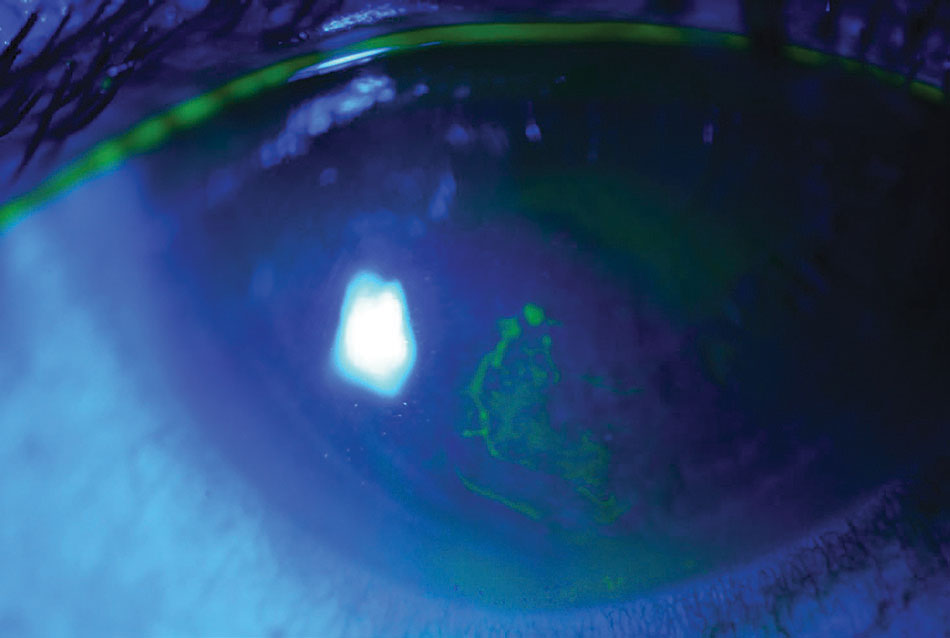 |
Since RCE syndrome is the result of abnormal adhesion of the corneal epithelium to the epithelial basement membrane, surgical interventions can remove the unstable epithelium and PTK can provide a greater stability and stronger epithelial anchorage. Photo: Rebecca Rojas, OD. Click image to enlarge. |
Recurrent corneal erosion (RCE) syndrome remains an important issue, as this disorder is characterized by episodes of corneal epithelial defect accompanied by pain, photophobia, tearing and blurred vision. Phototherapeutic keratectomy (PTK) was an excimer laser based surgical procedure widely performed by corneal surgeons for treating anterior corneal stromal pathologies, whose inherent ability to ablate corneal tissue with extremely high precision and minimal adjacent tissue damage, and it also has been a useful tool in RCE treatment. Because the studies on PTK’s treatment of RCE syndrome over the years are relatively small and represent early experience, researchers in China thought it was necessary to summarize previous studies to better understand the treatment’s efficacy and safety. Their team performed a systematic review and meta-analysis of the published literature that more precisely estimated the success rate, efficacy and safety of PTK treatment in patients with RCE of different etiologies. Notably, they found that it was more successful in treating trauma than treating corneal dystrophy.
The meta-analysis of 21 studies included 642 patients (705 eyes) with recurrent corneal erosions treated who underwent PTK. Of these studies, 10 reported the underlying etiology of RCE (10 studies included corneal dystrophy, three studies included post-traumatic RCE). Therefore, two etiologies of RCE were classified, which were caused by trauma in 99 eyes and corneal dystrophy in 230 eyes.
A total of 571 patients showed complete resolution of RCE symptoms after PTK. The mean length of follow-up ranged from nine months to 12 years. Recurrence after PTK occurred in 18% of cases, but subgroup analysis showed a recurrence rate of 17% post-traumatic RCE (17/99 eyes), and 22% (48/230 eyes) in the patient group with corneal dystrophy. Compared with patients with a traumatic cause of epithelial erosions, the likelihood to experience a recurrence was higher in patients with corneal dystrophy.
Treatment-related adverse events included subepithelial haze, hyperopic shift and decrease of the best spectacle corrected visual acuity. In this study, the incidences of these events were 13%, 20% and 11%, respectively. Most cases of haze were completely reversible during follow-up.
The study noted the inability to assess the specific impact of adjunct medications on the outcomes of interest was a notable limitation. The team suggested that future research should stress more attention on providing comprehensive and detailed information on medication usage to allow for a more thorough analysis of their therapeutic effects in surgical comparisons.
“Based on a comprehensive literature review, PTK has been found to be suitable for patients who have not responded to conventional treatments such as topical medications, bandage contact lenses, epithelial debridement and even superficial stromal puncture,” the researchers proposed in their paper. “Therefore, we recommend considering PTK if patients have undergone conventional treatments but continued to experience more than three episodes of recurrent epithelial erosion.”
Chen S, Chu X, Zhang C, et al. Safety and efficacy of the phototherapeutic keratectomy for treatment of recurrent corneal erosions: a systematic review and meta-analysis. Ophthalmic Res. July 25,2023. [Epub ahead of print]. |

